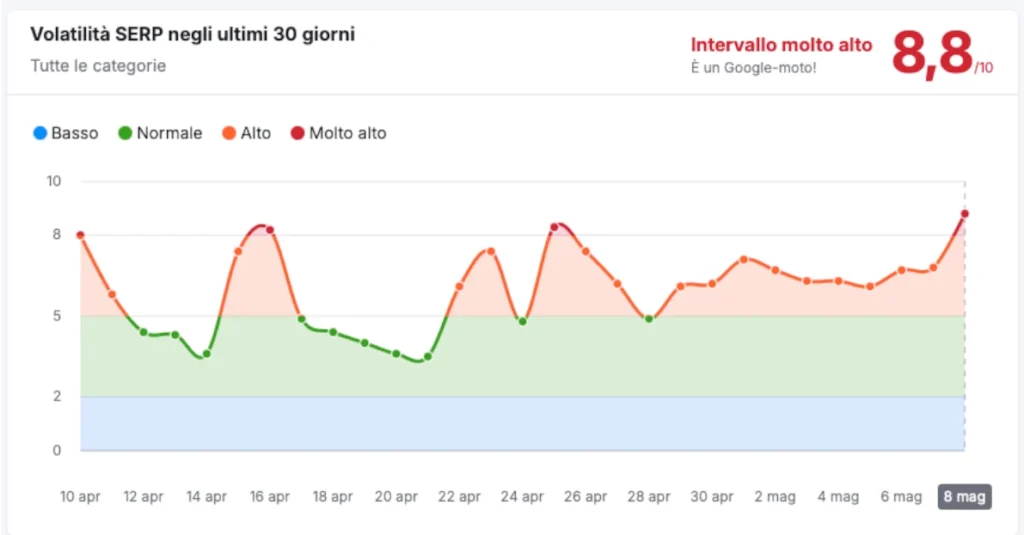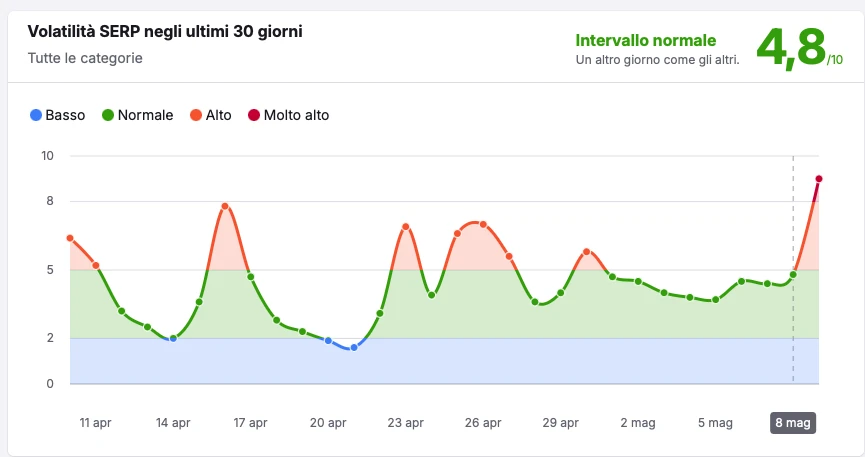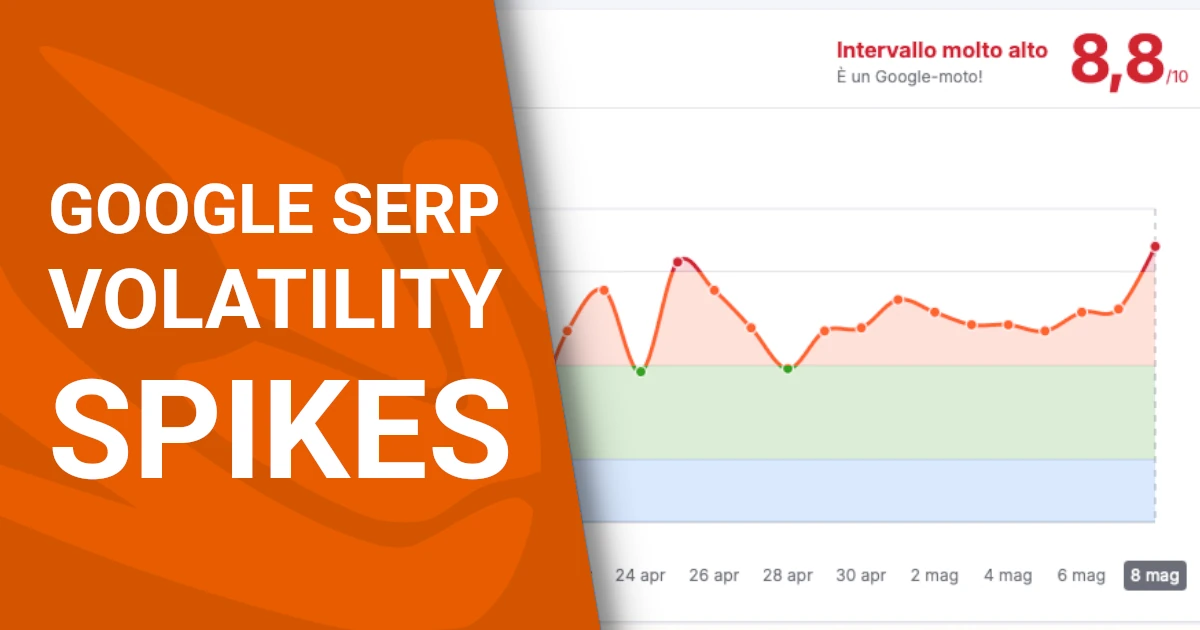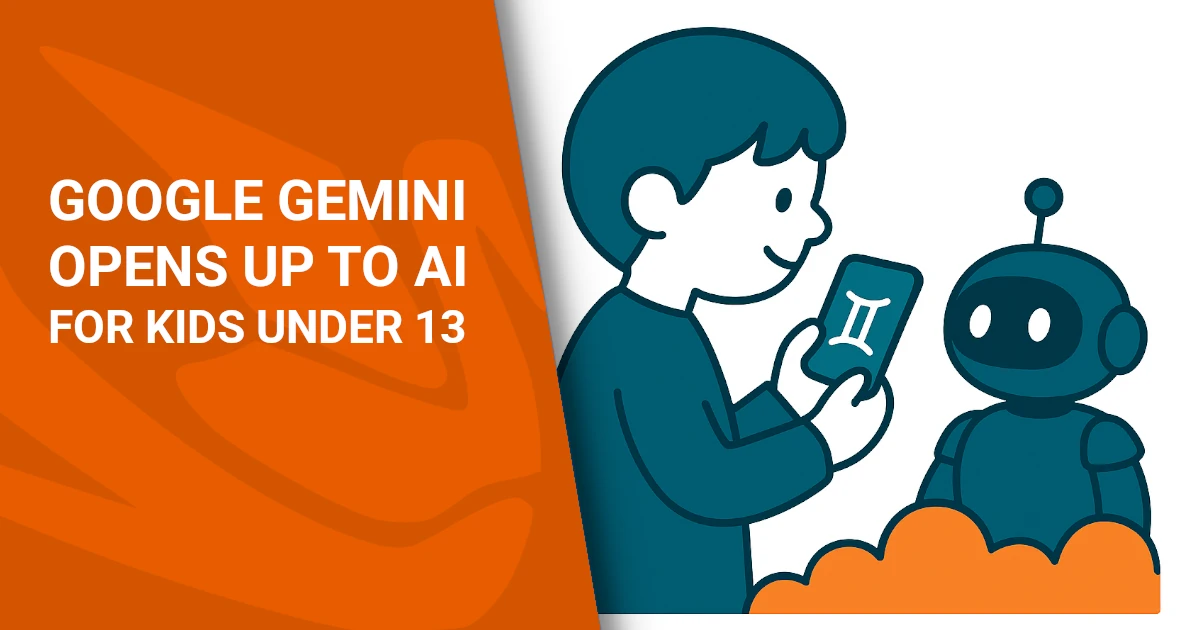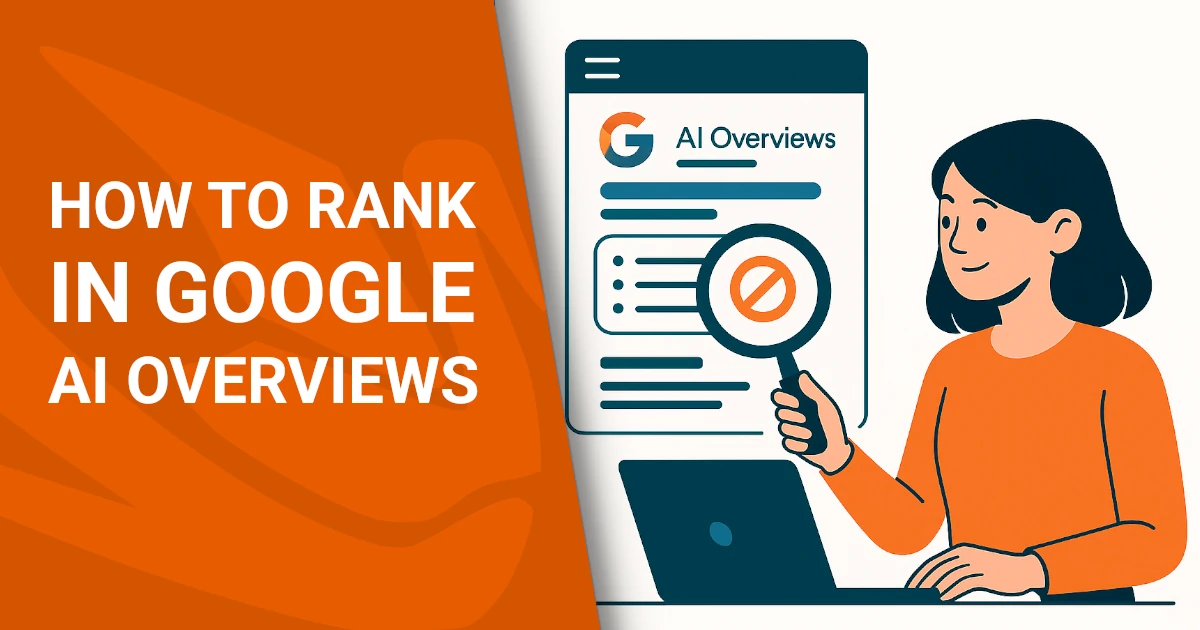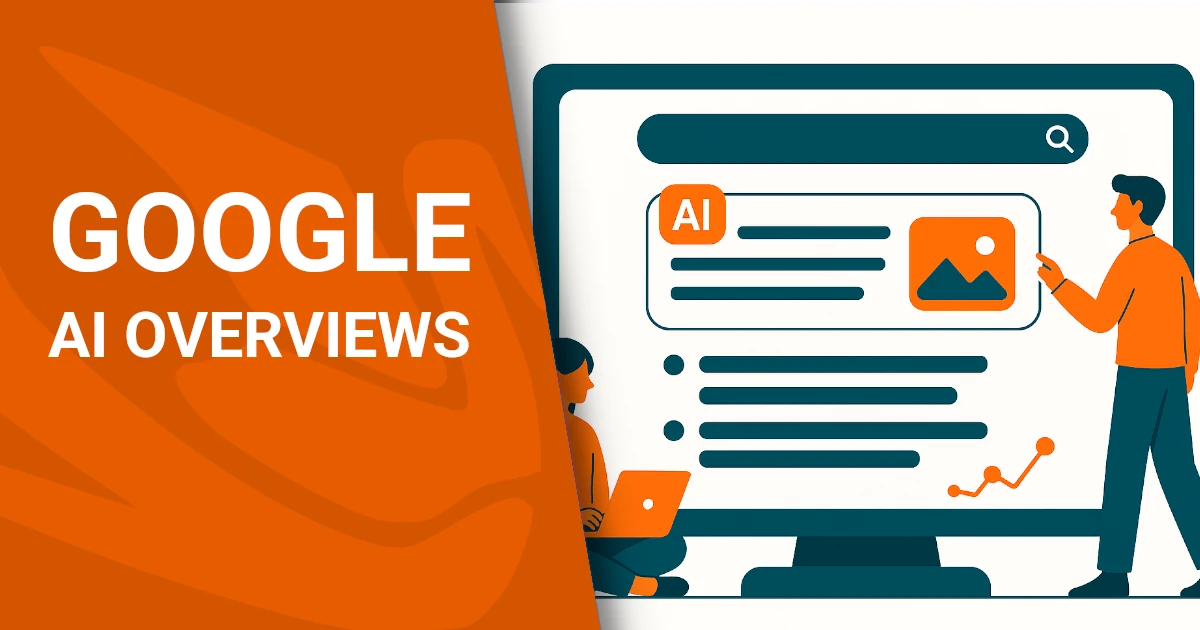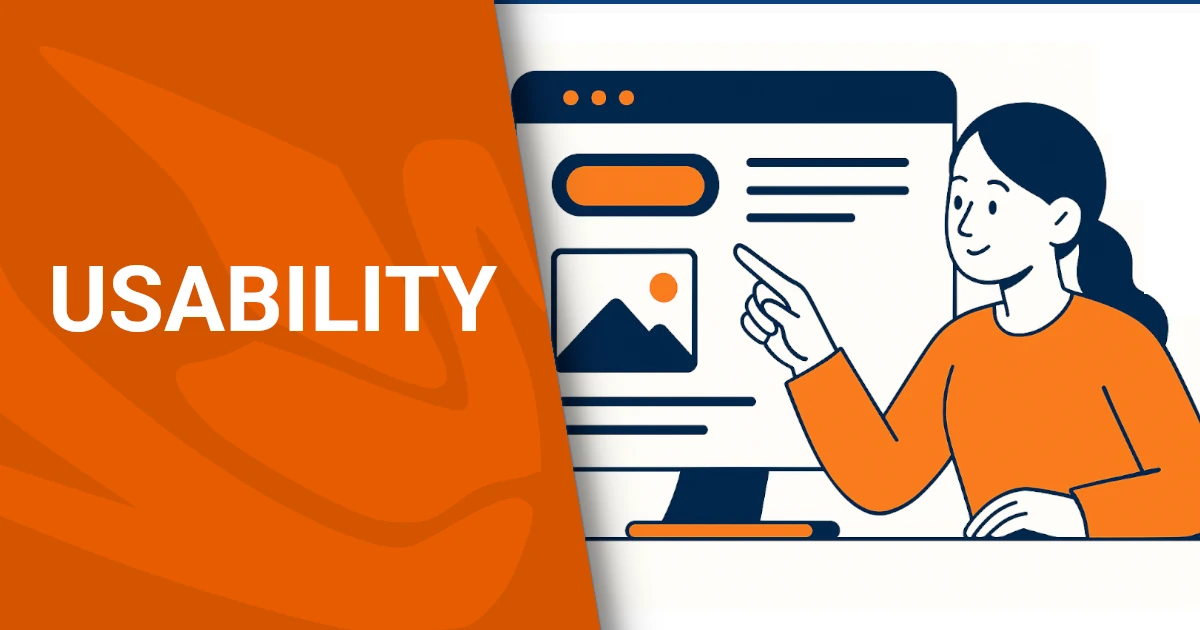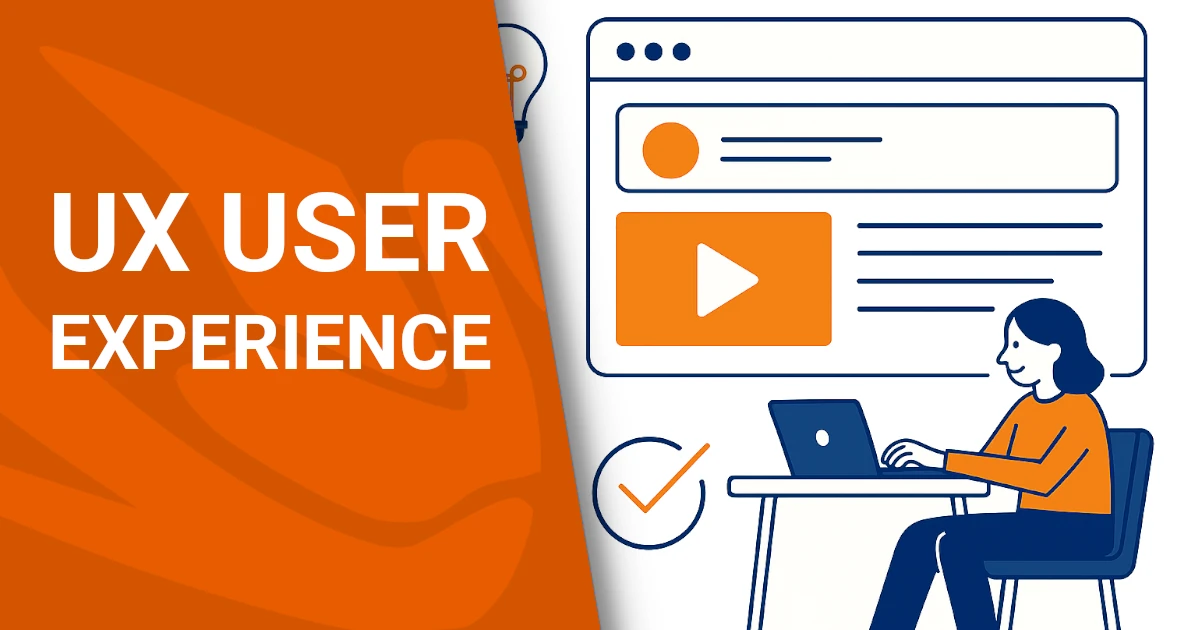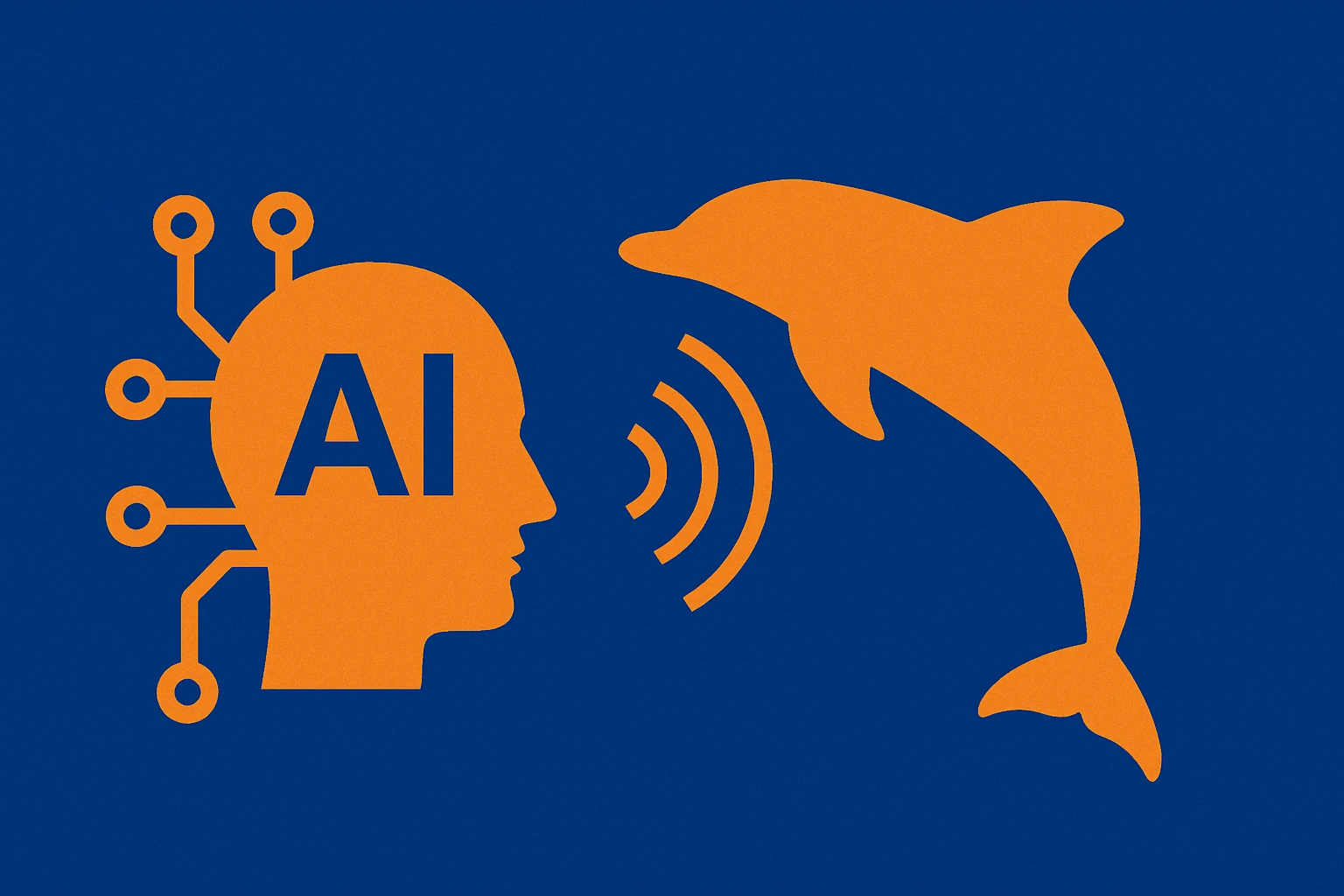User Experience (UX) is one of the most crucial concepts in the modern digital world. Often confused with aesthetics or usability alone, it actually encompasses much more: it refers to the overall experience a user has when interacting with a website, app, or digital service.
In this article, we’ll explore what it is, why it’s important, what a UX designer does and how to become one, how to measure UX, and how to improve it across different digital fields.
Table of Contents
What is User Experience?
User Experience (UX) is the sum of all emotions, perceptions, thoughts, and reactions a person has while interacting with a product, service, or digital system. It’s not just about usability or aesthetics — it includes emotional, cognitive, and functional aspects.
Put simply, UX is how a user feels when using a website, app, or tool. If the experience is intuitive, fast, and satisfying, the user will continue using it. If it’s frustrating or confusing, the user will likely leave — and not come back.
Real-world examples
Positive example: Imagine booking a stay on Airbnb. You enter your destination and dates, see clear listings with photos and reviews, and complete your booking in a few steps. This is a great UX — smooth, guided, and reliable.
Negative example: Think of a restaurant website that takes forever to load, doesn’t show the menu, and is hard to use on mobile. That’s a bad UX — users feel annoyed and will likely look elsewhere.
Key components of UX
- Usability: How easy is it to use?
- Accessibility: Can everyone use it, including users with disabilities?
- Desirability: Is the design appealing and engaging?
- Usefulness: Does it solve a real need?
- Credibility: Are the contents trustworthy and consistent?
A brief history: the origins of UX
Although the term User Experience became popular in the 1990s, its historical roots go back much further, to disciplines like ergonomics, cognitive psychology, industrial design, and human-computer interaction.
From ergonomics to digital design
In the 1950s and 60s, ergonomics was already applied to cockpit design, medical devices, and industrial tools. The goal was to make tools safe, efficient, and easy to use.
These ideas naturally moved into the digital space. With the rise of personal computing in the 1980s, there was a growing need for user-friendly interfaces — not just for engineers but for everyday users.
Don Norman and the birth of “UX”
The term User Experience was coined by Don Norman in the early 1990s while working at Apple as the company’s User Experience Architect — one of the first roles of its kind. He argued:
“It’s not enough for a product to work. It must also be beautiful, enjoyable to use, and consistent across every interaction.”
Since then, UX has become a foundational concept in digital design, influencing websites, mobile apps, software, and online services.
Notable historical examples
- The Macintosh mouse (1984): Designed to be intuitive for everyone, it’s a classic example of inclusive UX design.
- TV remotes in the 1990s: Often overloaded with buttons, they showed how overcomplicated interfaces hurt the user experience.
- Amazon in the early 2000s: Introduced features like “1-Click Buy,” user reviews, and personalized suggestions — a major leap in ecommerce UX.
Today, UX is a mature discipline with specialized professionals, dedicated tools, and academic programs.
Why User Experience is so important
User Experience (UX) is not just a visual or technical layer — it’s a critical factor for the success of any digital product or service. Great UX builds trust, improves communication, boosts conversions, and encourages loyalty. Poor UX leads to frustration, drop-offs, and damage to your brand reputation.
UX directly influences user behavior
Modern users have high expectations. They’re used to fast, clean, and intuitive interfaces. If a site is slow, confusing, or hard to navigate, they’ll leave — often for good.
Real-life examples
- Positive case: Think about Google. You type a word, hit enter, and results appear instantly. That’s excellent UX — it solves a real need quickly and smoothly.
- Negative case: You visit a train ticket website, but the “search” button is hard to find, the form won’t accept your data, and the page reloads constantly. Frustrated, you leave and look for alternatives.
Tangible benefits of UX
Higher conversion rates
Well-designed UX leads users step-by-step toward your goals: purchases, signups, inquiries.
Lower bounce rates
A strong first impression encourages users to stay and explore.
Increased user loyalty
A satisfying experience keeps users coming back and recommending your brand.
Reduced customer support costs
Clear, intuitive design reduces the need for help or clarification.
Stronger competitive advantage
Superior UX helps you stand out in crowded markets and gain customer trust.
What does a User Experience Designer do?
A User Experience (UX) Designer is the professional who designs the user’s experience with a digital product. Their job isn’t just to make things look good — it’s to create clear, intuitive, and functional user flows, always placing the user’s needs and behaviors at the center.
A UX Designer acts as a bridge between technology, design, and human psychology, ensuring that every user interaction — from a click to a purchase — feels smooth, logical, and satisfying.
Key responsibilities of a UX Designer
- User research
Gathers insights through interviews, surveys, heatmaps, analytics, and observation. The goal is to understand who the users are, what they need, and what frustrates them.
- Personas and user journeys
Builds user personas and experience maps to visualize user motivations and actions at each stage of interaction.
- Information architecture and wireframing
Plans content structure and creates wireframes, which are basic page layouts that help organize elements logically.
- Interactive prototyping
Builds clickable prototypes that simulate the product experience before development begins.
- Usability testing
Observes real users interacting with the prototype to identify issues, confusion, or drop-off points.
- Cross-functional collaboration
Works closely with developers, UI designers, marketing teams, and content strategists to turn user insights into real solutions.
Real-world example
An online store wants to increase conversions. The UX Designer:
- Analyzes Google Analytics and heatmaps
- Discovers users are dropping off during checkout
- Redesigns the checkout page with clearer instructions, fewer form fields, and faster payment options
- Tests the new flow with real users
- Result: Conversions increase by 25%
Essential soft skills
Beyond tools and techniques, a UX Designer should have:
- Empathy for users
- Analytical thinking
- Critical reasoning
- Clear communication
- Teamwork orientation
How to become a UX Designer
Becoming a UX Designer means learning to design user-centered digital experiences by combining skills in research, design, analysis, and communication. There’s no single path — it’s a multidisciplinary career open to both technical and humanistic backgrounds.
1. Understand what UX truly is
The first step is to realize that User Experience is not just about how something looks — it’s about how it works and feels. Recommended books:
- “The Design of Everyday Things” by Don Norman
- “Don’t Make Me Think” by Steve Krug
You can study Design, Psychology, Communication, or Computer Science, or follow online courses, bootcamps, or UX/UI master programs. Great starting points:
- Google UX Design Certificate (Coursera)
- Interaction Design Foundation (IDF)
- Bootcamps from schools like CareerFoundry or General Assembly
UX Designers need to master tools for design, prototyping, and usability testing:
- Figma: for wireframing and interactive prototypes
- Sketch / Adobe XD: alternatives for UI design
- Maze / Lookback / Hotjar: for usability testing and analytics
- Notion / Miro: for journey maps, research and brainstorming
4. Build a portfolio
A solid UX portfolio is essential to show your thinking process. Each project should include:
- Problem analysis
- User research
- Wireframes and prototypes
- Usability testing
- Measurable results
5. Get hands-on experience
Even without clients, you can:
- Join open-source projects
- Redesign existing websites as exercises
- Participate in UX design challenges (e.g. UX Challenge, Briefbox)
- Volunteer for startups or small agencies
6. Develop soft skills
Being a UX Designer also means being able to:
- Listen and empathize with users
- Collaborate across teams
- Communicate visually and clearly
- Accept and incorporate feedback
How to measure User Experience
A strong User Experience (UX) isn’t just about how users feel — it can (and should) be measured using objective tools and metrics. Measuring UX helps identify pain points, optimize interfaces, and prove how design impacts business goals.
Two main approaches
Qualitative tests
Based on direct observation of user behavior. They reveal emotions, struggles, and satisfaction. Examples:
- User interviews: to gather opinions, needs, and frustrations
- Usability testing: observing users as they complete tasks
- Think-aloud protocol: users explain their thoughts out loud while using a product
Quantitative metrics
These provide measurable data that can be tracked over time, often using analytics platforms or surveys. Here are the most common:
Key UX metrics
Conversion Rate
The percentage of users who complete a desired action, like buying a product or signing up.
Example: clarifying a call-to-action increases a store’s conversion rate from 2% to 4%.
Bounce Rate
The percentage of visitors who leave after viewing only one page. High bounce rates may signal content or UX issues.
Example: if 70% of users leave after the homepage, it may not be intuitive or engaging.
Average Time on Page
Shows how long users stay on a specific page.
Example: low time on a tutorial page might mean it’s confusing or unhelpful.
A customer loyalty metric based on the question: “How likely are you to recommend this to someone else?”
Users rating 9–10 are “promoters”, 0–6 are “detractors”.
System Usability Scale (SUS)
A 10-question standardized survey to assess ease of use after testing.
Example: an app scoring 90/100 on SUS is perceived as highly usable.
Why measuring UX matters
- It allows you to make data-driven decisions
- Helps prioritize improvements based on impact
- Demonstrates real design value to stakeholders
- Enables continuous, iterative enhancements
UX and the importance of design in general
User-centered design isn’t just for digital products. Physical products, environments, and services also benefit from a strong UX approach. Designing for human needs enhances usability, satisfaction, and reduces errors.
Improving User Experience in Web Design
In web design, improving User Experience (UX) means building interfaces that are useful, accessible, smooth, and intuitive, always keeping the user at the center. Good UX isn’t just about looks — it’s about functionality, speed, clarity, and satisfaction.
1. Clear, consistent navigation
Users should always know where they are, where they can go, and how to get back.
Example: navigation menu
<nav>
<ul class="menu">
<li><a href="/">Home</a></li>
<li><a href="/services">Services</a></li>
<li><a href="/contact">Contact</a></li>
</ul>
</nav>
2. Fast loading time
If a site takes more than 3 seconds, users leave. Optimize images, code, and use lazy loading for off-screen content.
Lazy loading images:
<img src="placeholder.jpg" data-src="real-image.jpg" class="lazyload" alt="sample image">
<script>
document.addEventListener("DOMContentLoaded", () => {
document.querySelectorAll("img.lazyload").forEach(img => {
img.src = img.dataset.src;
});
});
</script>
3. Responsive design (mobile-first)
More than 60% of users browse on mobile. Your design must adapt to all screen sizes.
Responsive CSS example:
.container {
max-width: 1200px;
margin: auto;
padding: 1rem;
}
@media (max-width: 768px) {
.container {
padding: 0.5rem;
}
}
4. Clear, visible calls to action
Each page should direct the user toward a clear action: subscribe, buy, contact.
Example CTA button:
<a href="/buy" class="cta">Buy Now</a>
<style>
.cta {
background-color: #28a745;
color: white;
padding: 1rem 2rem;
text-decoration: none;
border-radius: 8px;
font-weight: bold;
}
</style>
5. Accessibility and readability
High contrast, font size, alt tags for images, and semantic HTML tags are critical.
Example:
<img src="graph.png" alt="Quarterly sales graph">
<h1>Q2 Sales Report</h1>
<p>Sales increased by 15% compared to the previous quarter...</p>
UX and e-commerce websites
In e-commerce, User Experience (UX) is a critical success factor. A beautiful site is not enough — if users struggle to browse, search, or check out, they will abandon their carts, never return, and avoid recommending your brand.
A great UX leads to more sales, fewer returns, and a stronger online reputation.
Key UX touchpoints in an e-commerce journey
- Product search
Users must quickly find what they’re looking for: clear filters, smart search, clean categories.
Example: Zalando offers immediate filters by size, color, brand, price.
- Product page clarity
Provide complete info: strong visuals, full descriptions, availability, and user reviews.
Example: Amazon displays multiple photos, videos, specs, Q&A, and user feedback.
- Simple checkout process
The checkout should be short and frictionless — no forced sign-ups or redundant fields.
Common mistake: 5-page checkout with unnecessary steps.
Best practice: Shopify offers a single-page checkout.
- Trust and security signals
Reassure the user with HTTPS, return policies, customer support, and payment logos.
Example: Visa/Mastercard/PayPal icons and “100% satisfaction guaranteed” badges build trust.
UX metrics to track for e-commerce
- Cart abandonment rate: often over 70% — reduce it by improving checkout UX.
- Conversion rate: increases with clear, responsive design and seamless flow.
- Customer satisfaction and reviews: reflect perceived experience.
- Hotjar or Microsoft Clarity: to track user behavior visually.
- A/B testing: to test versions of CTAs, layouts, or messaging.
- Google Optimize / GA4: to connect UX data with sales performance.
UX and Digital Marketing
In Digital Marketing, User Experience (UX) is not a secondary concern — it’s a strategic element that can make or break a campaign. A fast, clear, and user-centered landing page can skyrocket conversions, while poor UX can waste even the best-targeted paid traffic.
Why UX and digital marketing go hand in hand
Every marketing effort — SEO, ads, email, social — aims to get users to take action. UX steps in as soon as they click, shaping how they perceive and interact with your site.
Real-world examples
- Google Ads campaign + optimized UX
A user clicks on “Get your free quote now.”
They land on a fast-loading page, with a clear headline, bulletproof benefits, and a short form.
Result: +40% conversions over the previous version.
- Email marketing + good UX
A promo email leads users to the site.
If the site is slow or confusing, they bounce.
If it’s clean, responsive, and focused, they stay and convert.
- Page speed
A slow site kills campaign results, especially on mobile.
Fix: compress images, minify CSS/JS, enable caching.
- Message-page consistency
Ads should lead to relevant, matching pages.
Fix: use dedicated landing pages for each campaign.
- Simple forms
Fewer fields, clear labels, easy submit.
Fix: use autofill, avoid unnecessary friction.
- Mobile-first design
70%+ of traffic is mobile.
Fix: design first for small screens, then scale up.
UX drives ROI in marketing
Well-designed UX directly improves ROI, because it:
- Raises your Google Ads Quality Score
- Lowers your Cost Per Conversion (CPC)
- Increases engagement and time on site
- Strengthens brand perception and trust
UX and SEO: a strategic alliance
A few years ago, SEO focused mainly on keywords, backlinks, and optimized text. Today, Google also considers user experience as a ranking factor. That’s why UX is now a core part of effective SEO strategies.
If your website provides a great experience — intuitive navigation, fast loading, clear structure — users stay longer, engage more, and return. These are all positive signals for search engines.
How UX boosts SEO (and vice versa)
- Core Web Vitals
Google’s metrics that measure real-world user experience: speed, interactivity, visual stability.
Example: A homepage that loads in under 2 seconds (LCP) is SEO-friendly.
Optimize images, scripts, and CSS to improve performance.
- Clear structure and semantic hierarchy
Good UX uses H1–H2–H3 tags, breadcrumbs, and readable URLs — all helpful for both users and Google bots.
- Mobile-first design
Since 2018, Google uses mobile-first indexing. A responsive, mobile-optimized site is non-negotiable.
Example: Hamburger menu, readable fonts, large touch targets.
- Lower bounce rate
If users find what they need quickly, they stay — improving session duration and page depth, both SEO-friendly metrics.
- Readable and engaging content
Good UX means short paragraphs, clear headings, visible CTAs — all making content more user-friendly and SEO-rewarded.
Real-world example
A company site had good content but poor layout, long blocks of text, and hidden CTAs. After UX improvements (layout, hierarchy, calls to action), average time on page increased by 70%, and Google rankings improvedsignificantly for target keywords.
UX as an SEO driver: benefits
- Higher organic search rankings
- More qualified traffic
- Lower bounce rates
- More conversions, not just more visits
When we talk about User Experience (UX), we usually think of websites and apps — but social media platforms are digital environments where UX plays a critical role. Every interaction — from scrolling to liking, from tapping a link to submitting a form — should be smooth, intuitive, and consistent.
A well-crafted social media UX increases engagement, reduces friction, and strengthens brand perception.
- Users decide in seconds
If a post is unclear or visually cluttered, they scroll past. UX focuses on visual hierarchy, readability, and clarity.
- Every click is precious
The jump from a post to a landing page should be fast, frictionless, and error-free.
Poor UX: broken links, non-mobile-friendly pages.
Good UX: clean, tracked links that open responsive, relevant content.
- Cross-channel consistency
The experience should feel seamless across Instagram, the website, email, and e-commerce. Users shouldn’t feel like they’re moving between disconnected platforms.
- Microinteractions and accessibility
Reactions, animations, and carousels enhance UX only if they don’t distract and are accessible on mobile and with assistive tools.
Real-life examples of strong social UX
- Instagram: a brand with consistent reel covers and a clear CTA in the bio improves user flow and funnel progression.
- Facebook: placing a visible “Shop Now” or “Learn More” button on posts makes conversion easier.
- LinkedIn: a post formatted with spacing, emojis, and clear headings boosts readability and interaction.
- Use readable visuals optimized for small screens
- Avoid dense or long text blocks
- Ensure post-link-landing page consistency
- Test all links on mobile devices
- Include clear, actionable CTAs
UX and Email Marketing
Email marketing is a powerful channel — but often overlooked from a User Experience (UX) perspective. A successful email must grab attention in seconds, be clear, readable, mobile-friendly, and guide users to a single, focused action.
Effective UX in email improves open rates, click-through rates, and conversions, while reducing unsubscribes and spam complaints.
Why UX matters in email
- Users decide in 2 seconds
The subject line and preview text are critical. Poor UX here = delete or ignore.
- Quick visual scanning
People don’t read, they scan. Use headlines, spacing, bullet points, and clear CTAs.
- Mobile-first design
Over 70% of emails are opened on mobile. Use responsive layout, larger fonts, and tappable buttons.
- One clear CTA
Focus on one primary action. Too many links = no action taken.
UX-friendly email structure example
<table style="max-width:600px;margin:auto;font-family:sans-serif;">
<tr><td style="padding:20px;">
<h1 style="font-size:24px;">Download our new free guide</h1>
<p style="font-size:16px;">We created something valuable to help you improve your digital strategy.</p>
<a href="https://yourcompany.com/guide"
style="display:inline-block;background:#28A745;color:#fff;padding:12px 24px;
text-decoration:none;border-radius:5px;margin-top:10px;">
Download Now
</a>
</td></tr>
</table>
Email UX best practices
- Keep subject lines short, clear, and human (under 50 characters)
- Use single-column layout for simplicity
- Ensure the CTA appears above the fold
- Avoid text blocks: use bullets, headers, and visuals
- Always test on mobile and in dark mode
- Include a visible unsubscribe link for trust and compliance
UX vs UI: what’s the difference?
In digital design, the terms UX (User Experience) and UI (User Interface) are often confused or used interchangeably, but they refer to two distinct concepts — closely related but not the same.
A well-designed UI can attract users. A strong UX keeps them engaged and helps them achieve their goals.
What is UX (User Experience)
UX refers to the overall experience a user has while interacting with a digital product. It includes:
- Navigation
- Load time
- Ease of finding information
- Completing tasks
- General satisfaction
Example: A simple but fast checkout flow with no friction offers great UX, even if the design is minimal.
What is UI (User Interface)
UI is the visual and interactive layer through which the user interacts with the system. It includes:
- Buttons
- Colors
- Typography
- Spacing
- Icons
- Animations
Example: An app with a clean layout, consistent icons, and well-sized buttons has a great UI.
The key difference
- UX is how it feels
It’s about flow, emotion, clarity, and overall experience.
- UI is what you see
It’s about style, layout, and visual interactions.
Think of a car:
- UI is the dashboard, steering wheel, and seat design.
- UX is how it drives, how comfortable it feels, how easy it is to park.
UX and UI must work together
The best products are born when UX and UI collaborate:
- A beautiful UI with poor UX frustrates users.
- A great UX with bad UI feels unprofessional.
The ideal is when the experience is smooth and the design is attractive.
How to improve UX in practice
Improving User Experience (UX) isn’t just about “making things prettier” — it’s about putting users at the center of every design decision. It’s a continuous process based on listening, analyzing, testing, and refining.
There’s no one-size-fits-all, but there are universal steps every team can follow.
1. Understand your users
It all starts with research. You can’t design a good experience unless you know who your users are, what they want, and what frustrates them.
Useful tools:
- User interviews
- Surveys (e.g. Google Forms, Typeform)
- Empathy maps, personas
2. Map the user journey
Visualize the path users take from entering your site to completing a key action (purchase, contact, download).
Identify pain points and obstacles.
Useful tools:
3. Build and test prototypes
Don’t wait for full development. Build wireframes and interactive prototypes to gather early feedback.
Tools:
- Figma, Adobe XD, Marvel App
4. Analyze real user data
Use analytics to track actual user behavior, not assumptions.
Tools:
- Google Analytics (GA4)
- Hotjar, Microsoft Clarity
- A/B testing tools (Google Optimize, VWO)
5. Remove friction and simplify
Every extra click, every unnecessary form field, every slow page is a UX obstacle.
Quick wins:
- Shorter forms
- Faster page load
- Visible, action-driven CTAs
6. Iterate continuously
UX is not a one-time task. It’s a cyclical process of designing, testing, and improving.
Recommended methods:
- Design thinking
- Agile UX
- Continuous feedback loop
Bottom line: UX as a business mindset
Improving UX means improving business — because satisfied users are users who:
- stay
- engage
- convert
- return
- recommend
Need help optimizing your product’s User Experience?
Dopstart offers a free initial consultation and can guide your company through the entire UX journey — from analysis to implementation and ongoing improvements. Reach out to discover what we can do for you!
Improve your users’ experience
Download our free User Experience checklist now — a practical tool to assess and optimize every stage of your digital project.
Click here to get Dopstart’s free PDF.
FAQ
- What is User Experience (UX)?
It’s the overall experience a user has while interacting with a digital product.
- Why is UX important in digital marketing?
Because it boosts conversions, retention, and user satisfaction.
- What’s the difference between UX and UI?
UI is the visual layer, UX is the emotional and functional experience.
- How can I improve my website’s UX?
Focus on navigation, speed, mobile design, and usability testing.
- What tools do UX designers use?
Figma, Sketch, Adobe XD, Maze, Hotjar, Google Analytics.
- Is UX important for SEO?
Yes, UX factors like speed and usability affect search rankings.
- Does UX apply to social media?
Absolutely — it enhances engagement and brand perception.
- How does UX impact ecommerce?
It increases sales and reduces cart abandonment.
- How is UX measured?
Through both qualitative insights and quantitative data.
- How can I become a UX designer?
Start with courses in research, design, and prototyping tools.
